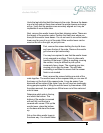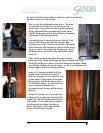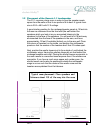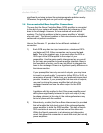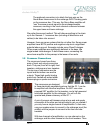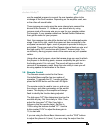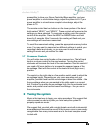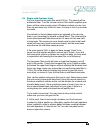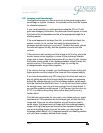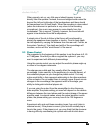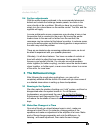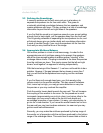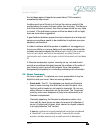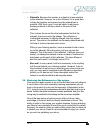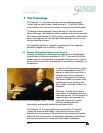
Ver 2.0
14
1414
14
~ÄëçäìíÉ=ÑáÇÉäáíó
2.1 Begin with the bass level
For now, leave the low-pass filter set at 100 Hz, This control will be
addressed later. Turn the volume control of the woofer amplifier up or
down until the voice sounds correct. Whatever controls you use, turn
them up and down only a little at a time. It is easy to turn it up or down
too much.
Concentrate on the mid-bass regions (as opposed to the very low
bass in your recording) to achieve a natural blend. The voice and the
music accompaniment should sound as if it were cut from one cloth,
not separate. The reason we use a female vocal to start is that male
vocals will have very much more bass content, and the lower bass
may obscure the mid-bass crossover point.
If the voice sounds “thin” or does not have enough “chest” to its
sound, turn the woofers amplifier’s volume up till it does. If you find
that turning the volume up creates too much low bass, you may want
to experiment with lowering the low-pass filter cut-of frequency.
The Low-pass Filter control will raise or lower the frequency cut-off
point of the woofer. Turning the low-pass filter up to a higher number
will extend the upper bass regions without affecting the low bass level.
Some very large rooms may require that you set the low-pass filter to
115Hz. Do not be afraid to increase this control to give the sound
more body, or reduce it if you find that there is mid-bass boominess.
Next, set the woofers using more than just a voice. Select some music
that you know to have good deep bass. Using the volume control on
the servo amplifier’s remote control, set the woofers for a natural and
powerful bass sound. Use a symphonic piece of music if you can, or
use a natural double bass instrument for your guide. If there is a
running bass line, each note should sound equally loud.
Try to make it sound real. You may have to return to the vocal to
make sure you have not gone too far.
If, at this point, there is not enough mid-bass, turn the Low-pass
number to a higher position or, alternately, position the main speakers
closer together in order to achieve better mid-bass coupling between
the main speakers. If it sounds too “fat”, turn the Low-pass control
down or adjust the volume.



